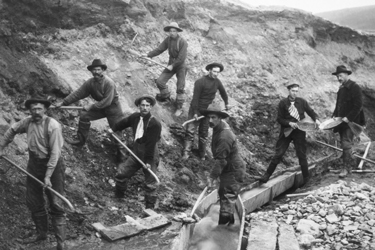
Though fairly brief, the Klondike gold rush had a great impact on the history of Yukon and Alaska. It occurred between 1896 and 1899, attracting about 100, 000 people with burning dreams of getting rich quick.
It was a free-for-all riches to be claimed in the Frozen northern territory of Yukon, Canada. But what really happened during the Klondike Gold Rush? Here are 10 facts you should know about the Klondike Gold Rush.
1. The Place of Gold Discovery
The gold was discovered in Rabbit Creek by two Indians Charlie Tagish and Jim Skookum, and a Seattleite called Carmack George. The Rabbit creek was later renamed Bonanza Creek. Shortly after the discovery, the residents marked and laid claim on different portions of this region. However, it took almost a year before the news of the gold discovery reached as far as Portland and this is what led to the gold rush.
2. The Gold Rush Was Fueled by Recession in the US
When the news of the gold discovery spread across the US, many people abandoned their work and rushed to take advantage of this opportunity. There was a great recession in the US and many people found it easier to risk everything they had to get a better life. The value of gold was extremely high in comparison to paper money and people had low faith and trust in banks.
3. Most Miners Were Just Ordinary People
Given that almost everyone in the US felt the pangs of the recession, people from all walks of life got interested in the Klondike gold. The journey to Klondike was traveled by people of nearly all age groups, professions, and occupations. Among those who resigned from their positions include the Seattle mayor. By then, gold mining seemed to be the most lucrative venture a person could get involved in.
4. The Miners Used Two Main Trails to Klondike
The two trails used by travelers were the White Pass and the Chilkoot trails. Both trails had great challenges that were hard to overcome. Some of the travelers died n these trails. Some from harsh weather conditions and others from diseases. Some also died after eating meat from dead horses.
5. Many Considered Gold as a Means of Getting Quick Riches
It's like a majority of the miners believed the moment they began prospecting for gold they would get rich as fast as possible. That's why they were willing to risk even their lives. The routes they took were dangerous with avalanches, hypothermic conditions, diseases, and even wild animals. The Chilkoot Trail was more dangerous because it was steeper and had lots of mud that made it a great challenge to pass in the fall.
6. Travelers Had to Carry Food that Could Feed them for a Year
The authority understood how difficult it would be for the miners to get extra food supply once they reached the Klondike gold mines. So it was made a requirement that each traveler had to pack food that could feed them for a whole year. Some found this to be impossible because it required between 20 to 30 trips to manage this quantity of food. Making so many trips also increased their chances of facing the numerous dangers experienced while traveling.
7. Yukon and Dawson City Developed Very Fast
Before the gold rush, Dawson City was regarded as a tent city with no electricity, running water, health facilities, etc. Everything changed with the arrival of 30,000 miners. Many amenities including fire hydrants were constructed. The electricity supply system was established and many businesses sprung up.
8. Only a Few People Got Rich From Gold
Of the 100,000 that set out to the Klondike, only 30,000 managed to reach the gold mine. And of these 30,000, only 4,000 became rich by actually digging gold. Some only marked territories, set up claims and sold them. Many people also got rich by setting up businesses to support the miners. Some also just got employed as laborers in other people's gold mines.
9. The Dead Horse Trail
In a bid to cross over to Yukon with the required amount of food and other supplies, the miners overburdened their horses. They also forced the animals to move faster than these animals could manage. As a result, many horses died and the White Trail became knows as the 'Dead Horse Trail' because of the many horse carcasses that littered the trail.
10. Many People Died From Harsh Weather Conditions
There weather condition in the Klondike was extremely cold. In fact, some rivers ended up freezing. The temperatures went as far down as -500 F. Many travelers who were ill-prepared for such conditions succumbed after developing cold-related health conditions.
The gold rush shows how far humans can go when determined for a course. The fact that many people and animals died along the way shows how the journey was tough, yet up to 300,000 people still managed to reach their destination without giving up.
